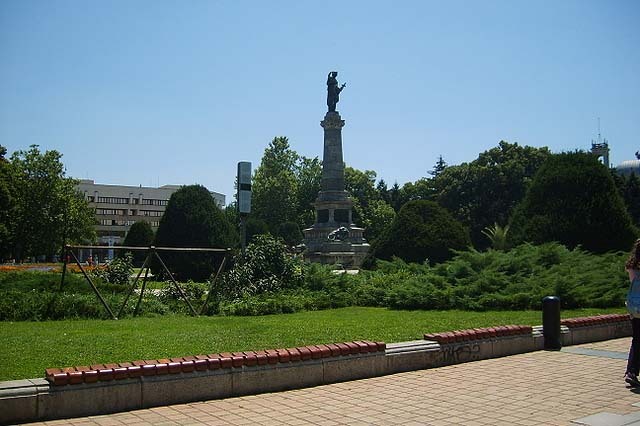The Danube Valley and the town of Rousse
- on 02.04.09
- Bulgarian properties articles
- No Comments
Everything that was to happen later in life had already happened in Rousse.
Elias Canetti, Nobel Prize winner
Rousse is a modern city of 120,000 people and is one of the most important cultural and economic centres in Bulgaria. This is the most European of cities in Bulgaria, both in terms of its architecture and its outward-looking stance.
Though Rousse suffered from economic setbacks after the Changes in the 1990s, it is getting back on its feet through new investment and the interest of domestic and foreign investors. In recent years the historic centre was given a complete facelift by the EU’s Beautiful Bulgaria Project (led by a British urban planner). This trend of renewal is continuing with private investors and new businesses, which are injecting fresh dynamism into the town.

Visitors to Rousse cannot fail to be charmed by the aristocratic old architecture and the spacious squares and streets. The town has been dubbed ‘Little Vienna’, a reflection of the architecture and Viennese style adopted by the city after the Liberation from the Ottomans in 1878. Its streets are lined with a beautiful selection of Baroque and Art Nouveau buildings. The central square is ringed with cafes around a landscaped park, and is traffic-free.
There are many places of interest in town, such as museums and historical sites, but the best way to see the town is to spend some time wandering its streets and cafes. Otherwise check out www.pbase.com/ngruev/rousse for a fine selection of the town’s buildings.
Rousse Location
Rousse is in the north of the country on the river Danube, which forms the border with Romania. It has the only bridge across the Danube between Bulgaria and Romania (though a second is being planned 200km upstream). The town is 320km (4hrs’ drive) from Sofia but only 60km (one hour’s drive) from the centre of Bucharest and 60km from an international airport.Thus the facilities of a major European capital are close at hand, in neighbouring Romania.The accessibility of the town is a key advantage for home-buyers. Now that Bulgaria and Romania have joined the EU, crossing the border here is simple and quick fpr EU citizens, and Rousse is becoming a shopping mecca for Romanians.
History of Rousse
From ancient times Rousse’s advantageous location on the Danube and its natural harbour have made it attractive to settlers. The city is recorded in Roman times under the name Sexaginta Prista (‘Port of Sixty Ships’) and was both a trading town and Roman garrison, forming one of a number of fortifications along the Danube along the Roman Empire’s northern boundary. During the Ottoman period the town (now known as Rustchuk) was an important fort and was surrounded by a city wall. The Russians succeeded in capturing the town in 1810, only to have to withdraw to defend the motherland when Napoleon marched on Moscow. After the Liberation the city wall was dismantled but it now forms part of the inner ring road and is signposted as part of the city’s urban trails and history walks. Before the Liberation the city boasted several diplomatic missions and foreign consuls as well as a varied and cosmopolitan community from all over Europe. After the Liberation, the diplomats moved to the new capital at Sofia and the city became a booming trade town with Europe, using the Danube.
During Communism, Rousse’s aristocratic past seemed to relegate it to something of a backwater. With its wonderful central squares, cafe culture, river walks and laid-back atmosphere, Rousse is still a forgotten gem. It has seen many changes in the last 10 years and now boasts an excellent selection of restaurants, bars and hotels. More recently the town has seen a growing expatriate community living in the town or outlying villages.
Average Property Prices in Rousse
Average residential property prices in Rousse are currently around β¬895 per square metre – slightly more than in Veliko Turnovo because of local demand. However, the surrounding village properties are cheaper, as fewer foreigners have bought around here than in the Stara Planina mountains. House prices vary according to the villages – houses in the Roussenski Lom Park tending to command the highest prices. Older houses can be found from as little as β¬6,000 for those in need of complete restoration, up to β¬100,000 or more for fully renovated houses and villas.
Leave a Reply
You must be logged in to post a comment.